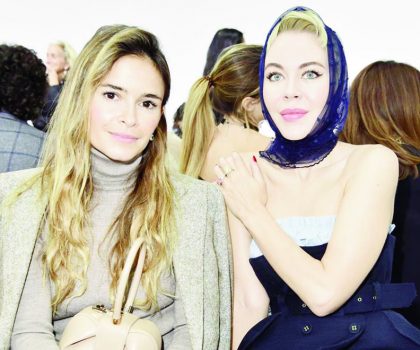 Fashion has always been seen and appreciated as a safe haven by those who felt isolated. Despite the fashion industry’s systematic racist and classist culture, on the surface level for most brands, it exudes a reachable dream that promises beauty and desire, emotions that we as humans all want to feel. For the rich, poor, gay, straight, white or black, fashion is a common meeting ground which enables us to all appropriate it to feel included and desirable.
Fashion has always been seen and appreciated as a safe haven by those who felt isolated. Despite the fashion industry’s systematic racist and classist culture, on the surface level for most brands, it exudes a reachable dream that promises beauty and desire, emotions that we as humans all want to feel. For the rich, poor, gay, straight, white or black, fashion is a common meeting ground which enables us to all appropriate it to feel included and desirable.
It is then no surprise that given the socio-political climate we are living in, most brands have opted to use political correctness and inclusivity for the most part as a form of marketing tool to gain mileage. We are, of course, also living in an era where the call-out culture has gained momentum and no brand wants the risk of being ‘dragged’, a concept whereby the brand gets ridiculed on social platforms without any remorse, as seen with with H&M a few weeks ago. However, the internet, which is both a blessing and a curse, offers a new dimension on how we look at conflict, controversy and how relatively easy it has become to dismiss the unkind, a blessing for those who feel unrepresented.
During the course of this past week, which was also Couture Week in Paris, Russian designer Ulyana Sergeenko and street style star turned entrepreneur Miroslava Duma found themselves at the centre of accusations surrounding racism, homophobia and transphobia. It was revealed in a series of posts on Instagram, that Sergeenko had sent Duma flowers with the note: “To My N….s in Paris”; both women are Caucasian. This was swiftly followed by apologies from both parties. In hers, Ulyana tried to prove that she is racially inclusive, because she listens to Kanye West, and that this somehow made her use of the racial slur okay.

The post, however, was quickly followed by a video on Bryanboy’s Instagram which showed Duma at a press conference in 2012 making homophobic and transphobic comments about the blogger Bryanboy and transgender model Andreja Pejić.
In the video, Duma responds to a question raised by a member of the audience which asked for her take on men in women clothing. She responded, “Honestly, I dislike that. Because somewhere, on TV or in a magazine, a little boy could see it and that boy wouldn’t understand it correctly, react correctly. I think a certain kind of censorship and refined culture is needed here…. We’re very concerned about the beauty and purity of the things we publish.” She was referring to her online magazine Buro 24/7.
As the outrage peaked, Duma had to issue yet another apology which few bought.
See, that is the thing with the internet and intentions. It somehow manages to quantify forgiveness and extremity which can be both a good thing and a bad thing. In Duma’s case, however, a big part of me believed she should be cancelled. These incidents weren’t her first. Perhaps the reason for the intense backlash this time round was because back in 2014 Duma had published in her magazine, a photograph of Garage magazine editor-in-chief Dasha Zhukova, sitting on a ‘black woman chair’. The chair, shaped like a black woman, was designed by Norwegian artist Bjarne Melgard and was an interpretation of earlier work by artist Allen Jones, who was famous for turning woman’s bodies into furniture, commentary on racial and gender issues in the 1960s.
It was the type of photo which any person of colour would look at and instantly feel some type of way in the most negative sense. It reeked of white supremacy and classism. Duma’s actions illustrate that there is visualization and actual proof of the industry’s horrid ways. In addition to this, despite how misrepresented you claim your actions are, the evidence of continuous behaviour is what is scary and with the internet it just doesn’t disappear.
While I personally don’t believe she will face such intensive backlash in Russia where her fan base is quite strong, it is a reminder that despite privileges, opportunities offered or your geographic placement, fashion and the internet, whatever the shortcomings, operate in a new era. They have a reenergized power from their consumer base, that isn’t dependent on the opinions of editors, designers, street style stars and the whole lot. After all, no brand can exist without the influence from its consumer base, so, be reminded that fashion is a common meeting ground for everyone. There is absolutely no room to impose personal preference, especially if you work in the industry.
www.online-runway.com
http://instagram.com/theonlinerunway









